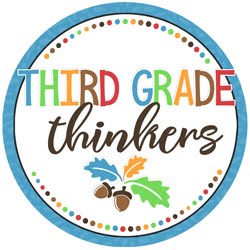Students who understand how words are formed by combining prefixes, suffixes, and roots tend to have larger vocabularies and better reading comprehension than peers without such knowledge and skills (Prince, 2009).
No shocker there, but then Nagy suggests that by focusing on this particular skill with our students who struggle can make a big difference. Nagy (2007) proposed that the teaching morphological awareness and decoding in school may be the way to narrow the achievement gap for children whose families differ in education and income levels, and ethnic or racial backgrounds. A deep and full knowledge and understanding of vocabulary will improve outcomes for students who struggle.
OK, Virginia teachers, hitting a little bit closer to home is this statement:
An examination of the Virginia Standards of Learning reveals a vertical alignment of standards from kindergarten through eighth grade focusing on decoding and vocabulary development, more specifically, on morphology. The results of the Virginia high-stakes assessment indicate a weakness in vocabulary development for all Virginia students, thus suggesting a need to provide more intense vocabulary instruction with direct instruction in morphology.
Morphology relates to the segmenting of words into affixes (prefixes and suffixes) and roots or base words. So what does this type of teaching and learning look like in your classroom?
My third graders like "playing around" with words. We become the word transformers and morph our vocabulary words into new ones using prefixes and suffixes. My more capable readers like to challenge themselves with how many transformations they can make. My less capable readers are in need of this kind of practice in breaking words and making words and benefit greatly from watching and hearing the more skilled transformers at work. For example when teaching the science word: flexible, my student transformers morphed that word into: inflexible, flexibility, flex, flexes, flexing. We talked about how adding these powerful prefixes and strong suffixes can change the meaning and part of speech. But before they can become super skilled word transformers, they need to become familiar with common prefixes and suffixes and their meanings.
I usually teach prefixes by clusters; for example, I would teach the "nots" together: dis, in, non, un. These all have the power to transform the word into meaning the opposite of the baseword. I have posters of the prefixes we cover and what each means.
After the introduction of the prefix, we work on sorting basewords with appropriate prefixes.
Using dictionaries make the student accountable for checking themselves for accuracy.
At long last, I have finally gotten this set together and on Teacher Pay Teachers.
Click the link below if you are interested in trying this set out with your students.
http://www.teacherspayteachers.com/Product/Teaching-Prefixes-and-Basewords-Powerful-Prefixes-1071129
Now I'd love to hear what plans and resources you use when teaching morphology!
Please share!
youngdor8@gmail.com









 youngdor8@gmail.com
youngdor8@gmail.com

















